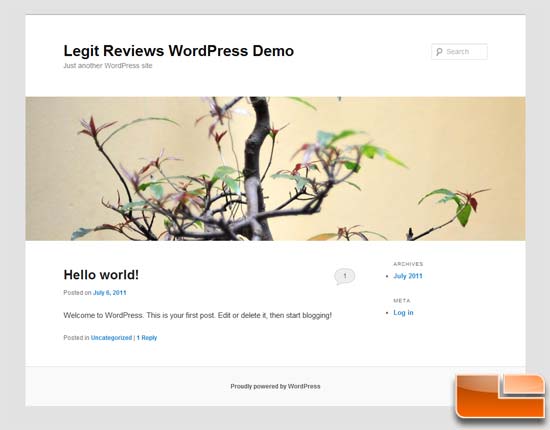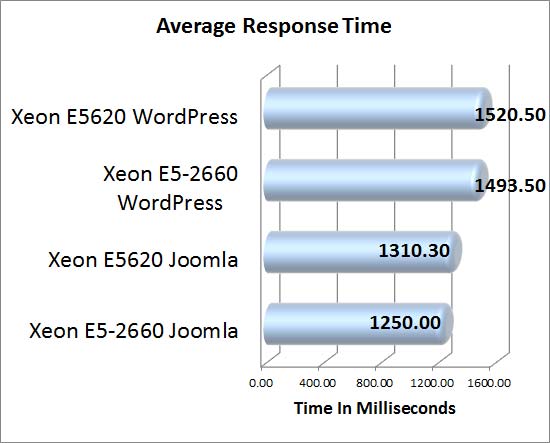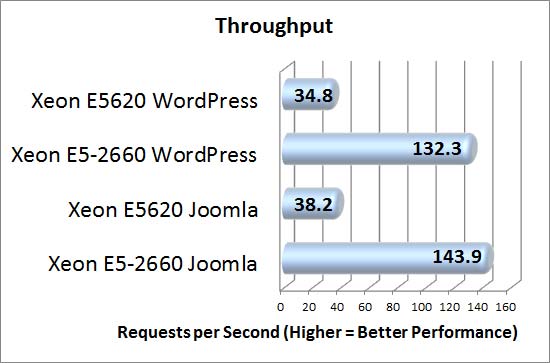Intel Xeon E5-2600 & R2000GZ Sandy Bridge-EP Server Review
LAMP – WordPress & Joomla
WordPress is an open source blogging tool and content management system (CMS) that is based on PHP and MySQL. Its large feature list includes a plug-in architecture and a powerful template system. WordPress is the most popular CMS in use on the internet, powering 14.7% of Alexa’s ‘top 1 million’ websites as well as managing 22 out of every 100 new active domains in the US.

Joomla is an open source content management system (CMS) and MVC framework that is based on PHP and MySQL. Joomla’s feature list includes news flashes, blogs and polls to name a few and can also be extended by third-party extensions.

For the purpose of this benchmark, WordPress 3.3.1 and Joomla 2.5.2 were tested using their default configurations on Ubuntu 12.04 LTS Beta with a MySQL back-end. Testing was done locally using a Dell PowerEdge 2900 as the client machine over a private network running on an HP 1810-8G switch.
To simulate user load we are using a software package called Apache JMeter. JMeter is a powerful Java based application with a wide range of very powerful features. It is used to test performance on both static and dynamic web resources by simulating different load types. For this set of testing we are using it to determine the maximum load our server can handle while staying under a specified average response time. Simply, we are attempting to determine how many hits per second, on average, this hardware is capable of handling in an acceptable amount of time.
One of the issues with running this type of test is simulating the exact load against different machines. While one set of hardware may respond at 1500ms under a load of 100 users, another server may only be able to handle 60 while responding within this time frame. This is the reason the response times will differ slightly between servers, different numbers of users had to be simulated to achieve comparable results.
Apache JMeter was run for these tests against several pages, including logging into the system and displaying one of the back-end admin pages. An average server response time of 1.5 seconds was the goal. Note that these response times are the overall response time and not the time to first byte.

Getting the average response time to be similar over test runs of around 150,000 hits is a rather difficult thing to do. Our averages per test were close enough to at least get some rough throughput numbers. Remember there are many factors that come into play for this type of test and all testing was done under no bandwidth constraints on a very low latency network, real world numbers will vary greatly.

Benchmark results: Considering the difference in core count between our two machines the numbers were right where we expected. Using the default install of WordPress the E5-2660 handles roughly 11.4 million hits per day while the E5620 was only able to process around 3 million. In Joomla the results were similar with the E5-2660 handling 12.4 million to the E5620’s 3.3 million.

Comments are closed.